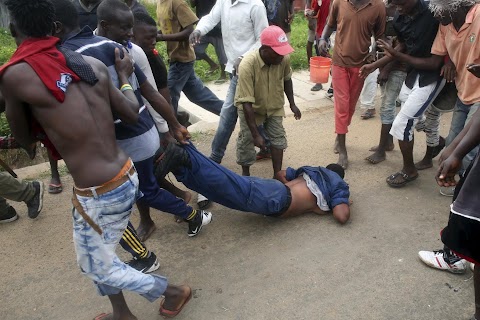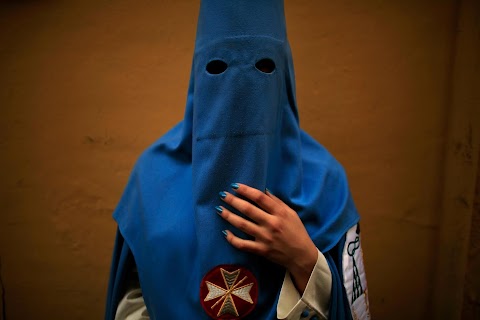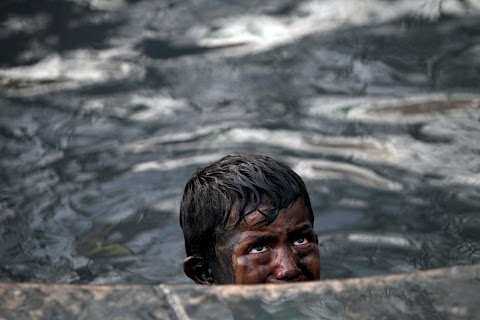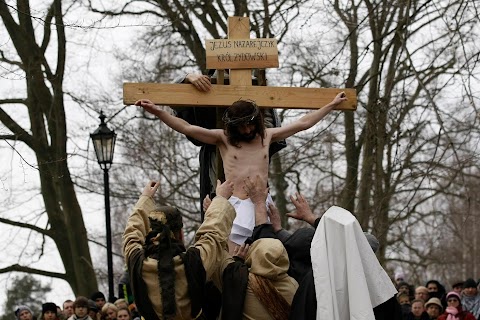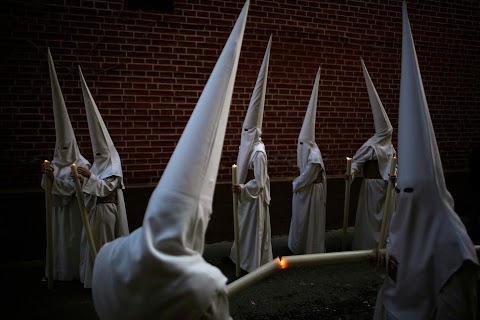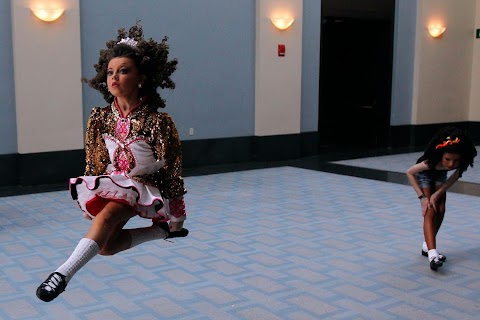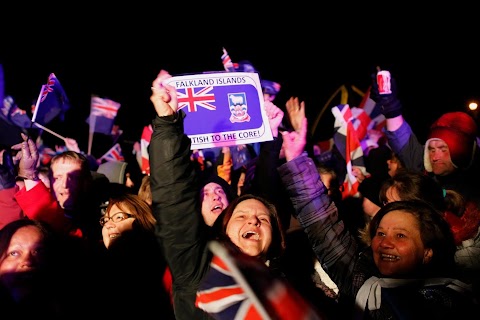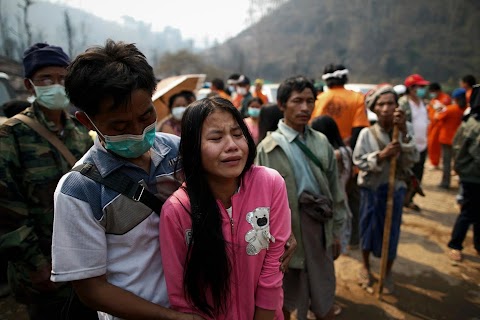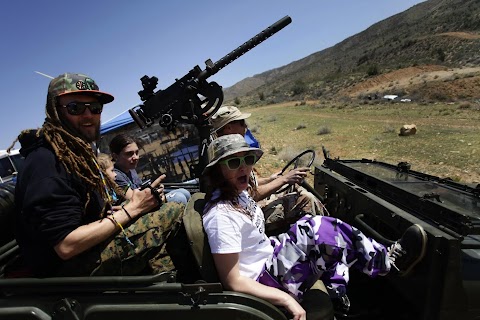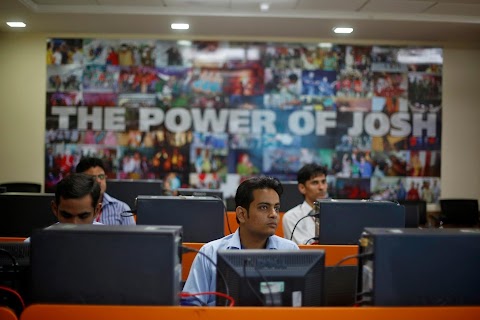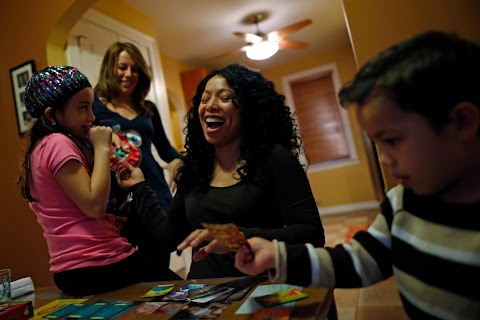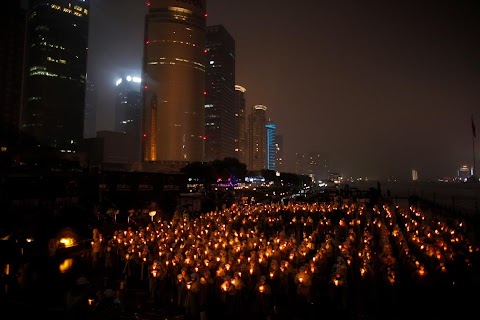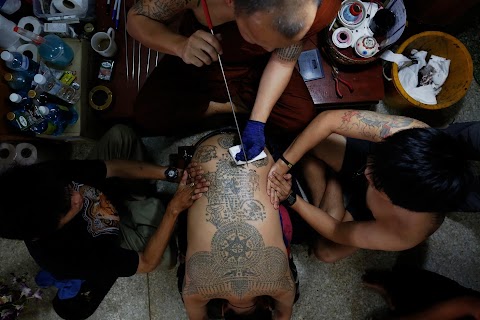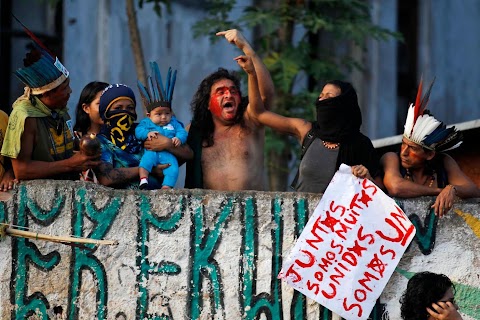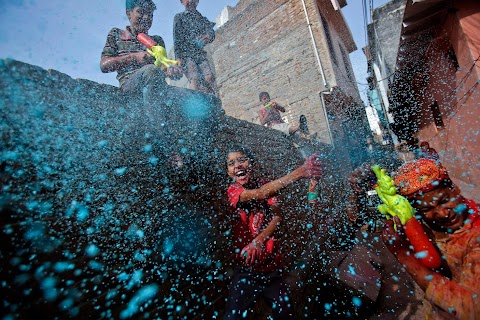
A riot of colour
 Vivek Prakash
Vivek Prakash
A boy sprays blue foam through the air during celebrations for Holi – also known as the Festival of Colours.
The Hindu holiday is marked all over India, but is especially popular in the north of the country. During the festivities, huge crowds of devotees come together and cover one another in powders and dyes coloured all the hues of the rainbow.

A man with his face daubed in bright colours sits inside a temple in the northern Indian village of Barsana.
In a Holi tradition unique to Barsana and the neighbouring village of Nandgaon, men sing provocative songs to attract the attention of women, who then "beat" them with bamboo sticks called "lathis".

Devotees in Vrindavan stand caked in red powder during the festival, which heralds the beginning of spring.
Slideshow

A boy is splashed with water and paint during celebrations in Chennai.

Hindu devotees throw coloured powder at a temple in Barsana.

A boy in a wheelchair sits with his face covered with red and yellow paint.

Members of a band are engulfed by a cloud of red pigment.

A boy poses for a picture with a water gun.

Paint-covered devotees are seen from above.

A woman holds up her pink-stained hand.

Clouds of colour explode over devotees at a temple.

The faintly yellow-stained feet of a devotee stand out against a purple wall.

Devotees covered in coloured water and powder take some time out from the revelry.

A woman squints as she looks out from under her veil after being smeared in coloured powder.

Priests spray devotees with a shower of water.

One devotee wraps his arms around another as they pose for a picture.

People splash pink water on a woman as she walks near the Bankey Bihari temple in Vrindavan.

A man covered in red and pink dances at a temple.

Hindu priests shower devotees with water.

A boy laughs as he sprays a passer-by.

Three men pray outside the Bankey Bihari temple.

A woman folds her hands inside the temple.

A man keeps an eye on Holi celebrations with a long wooden stick in one hand and a shotgun in the other.

Men are dragged on the ground to cover themselves in red coloured water.

Women cover their faces during "huranga" - a game played a day after Holi during which men drench women with liquid colours and women tear the clothes off men.

Men and women take part in "Huranga".

A boy splashes into orange coloured water.

Two men spray water onto revellers.
“My scalp is still pink and I have patches of colour all over my body.”
It’s one of those things that you just have to do: photograph Holi celebrations in north India.
As a kid growing up here, I played with coloured powder and water in the streets with my friends during the celebrations. As an adult, I’ve been lucky enough to have the chance to return with my camera.
Holi is celebrated widely across India, but it is most popular in the north of the country. The epicentre of the action is within a triangle of villages around the city of Mathura: the fun begins at Barsana, then moves to Nandgaon, Vrindavan, and Dauji, before finally finishing the week of rolling celebrations in the area where the Hindu god Krishna and his consort Radha are thought to have been born.
It’s a festival that celebrates the arrival of spring, but in this region it also has special significance because it celebrates the story of Radha and Krishna and their love for one another.
The enthusiasm of the people celebrating is unmatched – the energy and the sheer size of the crowds make for dazzling scenes drenched in water and colour. The pictures are delicious.
But I have to admit, having covered it now for the first time, it’s harder than it looks to get a great picture. Keeping your equipment dry and operational is a big challenge.
On my first day of coverage, I arrived at the village of Barsana early in the morning and headed straight for the main temple where celebrations would take place.
I was disappointed at first, as the morning session was a bit subdued. However, by the time the temple re-opened at 4pm it was a different story; there were thousands of people waiting to storm the entry doors. Inside, a sea of bodies heaved against each other as coloured powder and buckets of orange water were tossed through the air.
It was hard to hold your position steady enough to shoot pictures, let alone compose something nice. At one point, there was so much powder in the air that the photographers were completely caked with it – their nostrils and lungs were full of red dust. I wished I had brought a surgical mask instead of a scarf to shield myself.
In an odd tradition, as soon as the fun at the temple is over, people head out into the street for “Lathmar Holi”, in which men from the neighbouring village of Nandgaon sing provocative (and sometimes really lewd) songs at women, who then use huge wooden sticks to “beat” the men as they crouch on the ground while holding a shield.
I thought it would just be a bit of fun, but the women really do go for it. I would not want to be caught under one of those sticks! This scene repeats itself the next day in the village of Nandgaon, where there is another huge temple rush, although it is a bit easier to navigate as there’s space to move around. Then it’s the men from Barsana’s turn to be beaten by the women of Nandgaon.
In Vrindavan, the Bankey Bihari temple is tucked away in a small meandering alley. The crowd is unbelievable: the streets are jam packed with revellers, the queues to get in are extremely long, and there is no space to move inside.
Devotees constantly smash into each other and push and shove as they make their way to the front to get a glimpse of the resident deity, all the while shouting slogans and beneath clouds of flying powder and torrents of water.
At a shelter for widows who have been abandoned by their families, I was lucky enough to experience one of the happiest things I’ve ever witnessed. The widows, who traditionally would have shunned celebrations of any kind for fear of social reprisals, threw flowers into the air as they celebrated Holi for the first time. Women were crying tears of joy, laughing and singing. I felt moved enough to put down my camera and just take in the bliss for a couple of minutes.
Our coverage finished at the Dauji temple, where I wandered in the tiny village before the “Huranga” celebration, which marks the end of Holi festivities in the region.
As a photographer uninitiated in covering this celebration, I was surprised by just how intense the experience is. Not only are you shooting two to three sessions of the celebration every day, but you’re also trying to get a sense of variety in your pictures. And you’re doing that while drenched and caked in coloured powder and constantly wiping your lens to keep it dry and clean.
I wore the same T-shirt for all seven days of coverage and I lost a pair of slippers outside a temple (you can’t enter with footwear, and my slippers were a cool pair that quickly got nicked). One pair of board-shorts tore in Nandgaon (thankfully in a place that didn’t outrage anyone’s modesty) and I’m planning to throw out a pair of North Face pants when I’m done with this job.
My scalp is still pink and I have patches of colour all over my body. The stains haven’t come off with soap or shampoo, but I’m told by experts that caking myself in chickpea flower mixed with yoghurt and then taking a shower does the trick. I wonder if that will clog the drain in my flat in Mumbai.
Before Holi, I was told all sorts of scary stories about dead cameras, ruined lenses and trashed equipment. So I asked around and took all the advice I could about how best to “Holi-proof” my gear.
My basic Holi coverage kit contained: a non-scratch cloth, cling film, waterproof covers, nail polish remover, gaffer tape, scarves, hand towels and a belt pouch to carry dry items and spare lenses.
I prepped my cameras and lenses by wrapping them in cling film to protect them in case water somehow got through the rain covers. It made the camera pretty difficult to operate and it’s very hard to judge what pictures are good on the back of an LCD screen covered in food wrap and a translucent waterproof cover. I shoot in manual only.
Changing the ISO and aperture became a real issue as it’s very hard to recognise which buttons you need to push under all those layers. I was surprised because I can usually change all that without having to look at the camera, but I found myself searching for the right buttons all the time. Luckily, as annoying as this was, I got used to it after several days and I credit it with saving all my gear.
In the end, I managed to walk away without having any equipment damaged, except for a lens filter that smashed when I slipped and fell down a set of stairs in the hotel. Not bad for seven days of Holi coverage – losing just one filter, a pair of slippers, a pair of board-shorts and a t-shirt.
In exchange, I’ve had one of the best experiences of my life and walked away with many very happy pictures. I’d come back in a heartbeat. But maybe next time, with a water-resistant point and shoot instead of a Canon 5D Mark III and 1D Mark IV to worry about!

